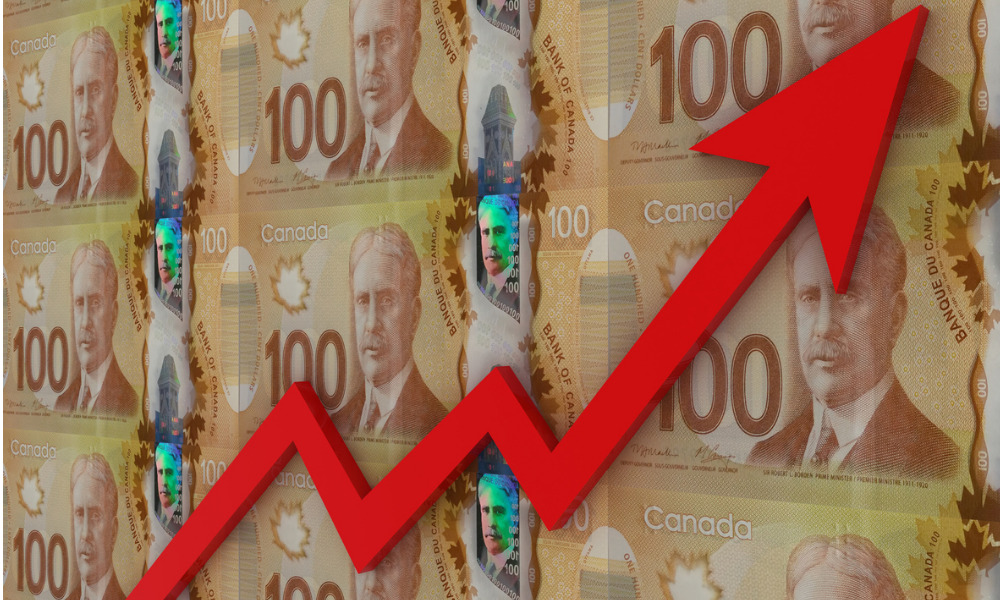It's time to start 'leaning into small changes' to portfolios, says senior wealth advisor

Advisors weren’t surprised when both the February consumer price index and Federal Reserve rates increased yesterday, especially after the Bank of Canada lifted its rate two weeks ago. But, given the increasing global uncertainty, some advisors and portfolio managers are looking at portfolios again.
Julie Shipley-Strickland is the Senior Wealth Advisor for Julie-Shipley-Strickland Wealth and Risk Management with Wellington-Altus Private Wealth in Calgary. She told Wealth Professional that some advisors may have thought that the Federal Reserve would delay the start of its first rate hike in four years until April because of the Ukrainian invasion, but “I don’t think a quarter basis point is really going to make or break either way.”
The Federal Reserve raised interest rates by 0.25% to 0.50% yesterday, the first time since 2018. It also signalled there could be more hikes, bringing the rate to 1.9% by late 2022 and 2.8% in 2023.
Statistics Canada also announced that consumer prices increased by 5.7% year-over-year in February, up from a 5.1% gain in January. That was the largest gain since August 1991. February also marked the second consecutive month where inflation exceeded 5%. Statistics Canada attributed the increase to higher gasoline, grocery, and shelter costs.
Strickland noted that what’s driving inflation is supply chain issues resulting from the COVID-19 pandemic, which are dissipating, and China’s new pandemic lockdowns. She’d seen data indicating those supply chain issues could normalize in North America by late Q2 or early Q3 this year.
Meanwhile, she said that while Russia’s a large exporter, it’s also increased its exports since it invaded Ukraine.
“So, I think we have to realize that raising interest rates is not going to affect supply chains from COVID-19. Nor is it going to fix commodity fluctuations,” she said, also noting that the Bank of Canada and Federal Reserve don’t want to look like they’re not ‘doing anything’ to manage inflation.
As for her portfolio positioning, she said she understood rates would increase this year, so positioned them more defensively in December and January, especially for those on fixed income.
What’s a bigger concern for her right now is that, even though unemployment rates are going down and labor statistics are very positive, retail sales have declined without any explanation yet.
“You’ve got to be nimble, and things have evolved with the Ukraine-Russia crisis,” she said. “But I’d just lean into smaller changes rather than a massive overhaul of portfolios.”
Avi Hooper, Invesco Canada’s Senior Portfolio Manager, said inflation is running far too high and both the Bank of Canada and Federal Reserve “are behind the yield curve. The bond market was telling them in the fourth quarter of last year: ‘you need to raise interest rates’.”
While he though the Fed’s last announcement showed it considered inflation transitory, “what we just heard from the Federal Reserve is almost like it’s running to catch up with the market,” he said, noting it expects six more rate hikes this year, which is very aggressive.
With Canada’s inflation rate continuing to run at record highs, he said the Canadian and American economic outlooks appear healthy, but the Feds have “pushed off the discussion around the balance sheet, likely until the May meeting. So, you’ve got tighter than expected policy, and we think that’s more likely to lead to weaker economic growth.”
Hooper said there’s exceptional activity in the bond market. The Canadian government’s two-year bond yield is up nine basis points while the 30-year bond yield is down nine basis points. So, he said, “the central banks may have to keep tightening further” since “it’s very rare to see an 18-basis point move.”
“This isn’t something we’ve witnessed very often in the past,” said Hooper. “Honestly, in my 20 plus year career, that sort of volatility doesn’t happen very often.”
While Hooper noted that some of February’s inflationary hike came from oil, prices had climbed to $130 a barrel and then dropped to $95 a barrel in the past week, so that influence has retracted.
“If the Bank of Canada and Federal Reserve are gong to raise rates further than expected to ensure that inflation doesn’t accelerate to the detriment of the overall economy, that’s going to come with a cost, and that cost is growth. So, inflation itself is an attack on growth,” he said. “So, we think that ultimately, growth is going to slow and inflation will slow. But, in the near-term, monetary policy is driving material dislocation in the yield curve. It’s been flattening, but this flattening is taking it to another level.”



